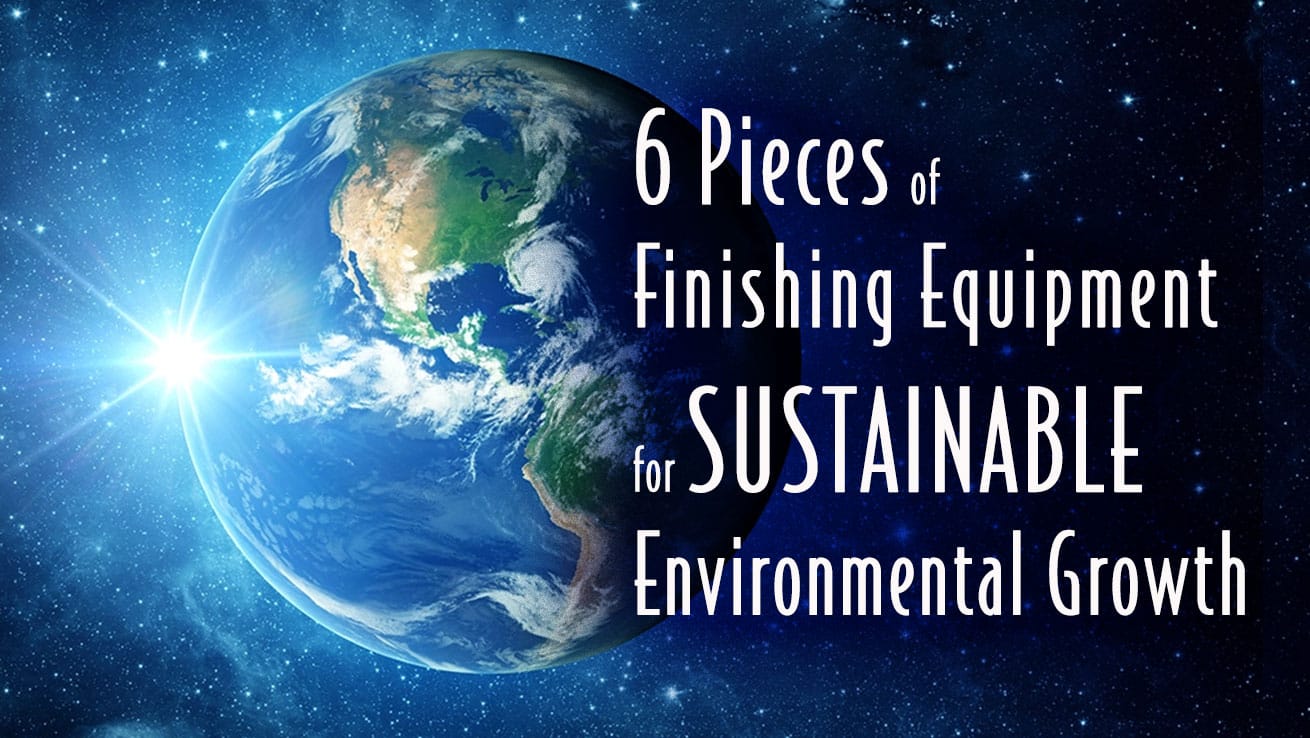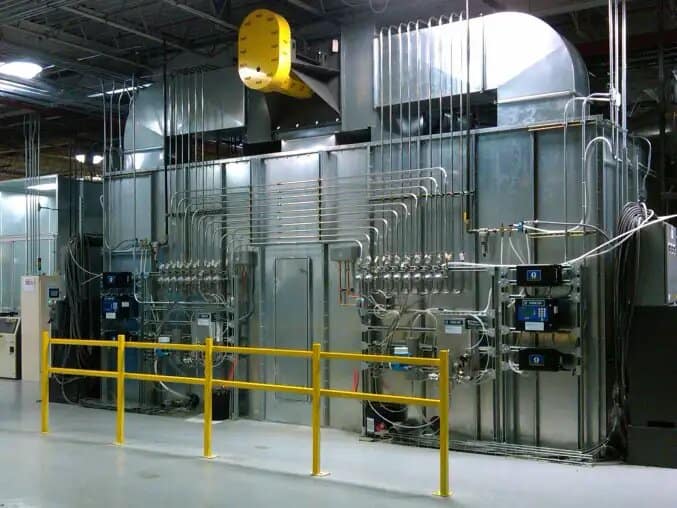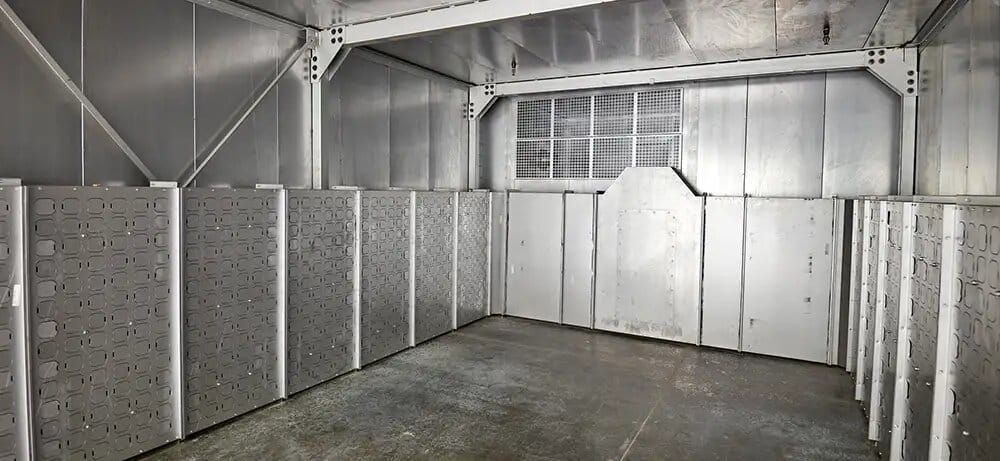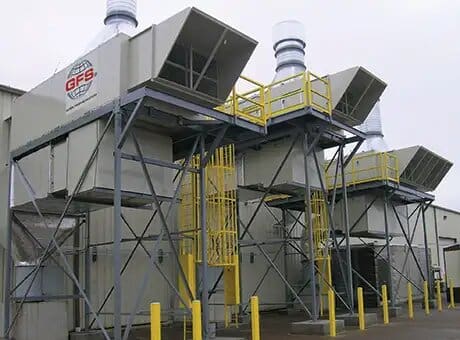
Many aspects of paint booth technology have evolved to reduce energy consumption, while also contributing to a more efficient paint environment. Not only do these technologies reduce the environmental impact of operating a paint shop, but they also lead to a cleaner, brighter and more productive operation.
In hopes of helping protect the environment, Global Finishing Solutions (GFS) has identified six pieces and components of finishing equipment that contribute to sustainable growth in your shop.
Recirculating spray booths provide energy savings by reducing the volume of make-up and exhaust air for the booth while maintaining accurate control of climate and airflow. They also offer capital expense savings, as air handling and abatement equipment are reduced in size when using a recirculation booth.

Typically used for custom industrial and aerospace applications, where climate control is essential for the painting process, recirculating paint booths heat, cool, de-humidify or humidify only the incoming fresh air. In many applications, the incoming fresh air accounts for just 20 to 30 percent of the total air that moves through a recirculating spray booth, making recirculation booths an environmentally friendly option.
Further energy savings can be realized in heated paint booths that recirculate heated air during the cure cycle. With recirculation an option in both spray and cure cycles, Recirculating Spray Booths from GFS offer maximum energy savings.
Powder coating is becoming increasingly popular across both industrial and automotive refinish industries. Compared to liquid coating, powder coating does not release volatile organic compounds (VOCs), solvents or other pollutants into the air. These are commonly found in paint fumes, which are captured within paint booths.

Another environmental benefit of powder coating is that, in certain powder booth designs and uses, over-sprayed powder can be recovered and reused, saving cost and reducing waste. In recovery-style powder booths, such as GFS Powder Recovery Booths, reclaiming wasted powder is possible through fluidized beds that sit beneath the filters. Overall waste from powder coating is minimal, and it can be disposed of easily and safely.
For the majority of mid-range industrial ovens, gas burners are cheaper to purchase and run than electric heaters. That is largely because electric ovens are indirect-fired, meaning the air is heated indirectly, as the burner is fired into a heat exchanger. Gas ovens are direct-fired — the burner is fired directly into the process air stream to heat it.

In recent years, the cost of gas in the U.S. has been less than the cost of electricity. This drives most industrial manufacturers to select gas ovens over electric ovens, as the operational cost of electricity is so much higher.
Infrared (IR) drying technology increases paint shop throughput by providing significant time savings over a traditional cure cycle or convection dryer, as vehicles do not have to sit overnight before polishing.

In gas-powered IR systems, a catalytic reaction decreases overall cure time. However, this does not happen until the units are preheated to 200 degrees Fahrenheit, which can take up to 15 minutes. To prevent lost time during the warm-up period, gas catalytic units are typically left on all day, consuming a large amount of energy.
Short wave electric IR technology, such as REVO Accelerated Curing Systems from GFS, generates only a fraction of the energy costs needed to run a conventional curing system by providing exceptionally fast drying times that reduce the need for rework. REVO Systems concentrate drying energy on only the panels needing repair, delivering an even, complete cure. With electric IR technology concentrating energy only where it is needed, energy is saved by not having to heat the entire booth for small repairs or to cure just a few panels.
An Air Make-Up Unit (AMU) allows for environmental temperature control in a paint booth during coating application and curing. AMUs maintain a constant leaving-air temperature regardless of the incoming, outdoor air temperature and replenish equal amounts of fresh air for every cubic foot of air exhausted.
With an AMU on your paint booth, the quality of the coatings is not adversely affected, thanks to conditioned, filtered air that is supplied to the booth. There is no need to draw air from the facility, which improves working conditions and lowers operating costs.

Using summer/winter mode on GFS AMUs, a baseline temperature for the paint booth is more easily established. This eliminates some of the problems associated with frequent temperature fluctuations, keeping your finishing operation running smoothly even as the seasons change.
It is most expensive to run a paint booth in spray mode. Having the booth in summer mode during warmer temperatures ensures the burner stays off in spray mode. This saves on utility costs and prevents the booth from becoming too hot for painters.
As air is exhausted from finishing equipment, heat is lost as well. Industrial heat recovery systems help reclaim some of the heat that escapes with exhausted air, providing measurable energy savings. GFS Heat Recovery Systems provide 40 to 50 percent energy savings for air make-up systems, serving the booth for both heating and cooling.

The direct-fired burner offers 100 percent thermal efficiency, as opposed to 80 percent efficiency for an indirect-fired AMU. The turndown ratio for direct-fired units is much greater than common indirect-fired units. This means better control of discharge air temperatures and better use of fuel energy to heat the air as it moves across the burner.
This is just some of the finishing equipment that can increase the productivity and energy efficiency of your operation. Whether you are investing in new finishing equipment or exploring ways to improve your current finishing environment, we encourage you to look for equipment and solutions, such as the ones listed above, that can not only improve efficiency and maximize production, but are also ecologically friendly.
One of the best ways to highlight your business is through a story that you can share across your online platforms. It humanizes your business and shows that your business can make a meaningful impact. Your testimonial would be used as a project profile on the GFS Booth Blog and can be shared on your website and/or social media channels.
Complete this form and we’ll be in touch to showcase your company.

Shop a variety of GFS aftermarket products, including booth protection products and mobile accelerated curing units. And enjoy the convenience of fast and free ground shipping throughout the contiguous United States.

Located at GFS’ headquarters in Osseo, Wisconsin, the Center for Excellence is an innovative facility featuring an automotive refinish training center, as well as a separate space dedicated to technical product training.

GFS is continuously searching for talented, ambitious individuals to join our team. We aim to provide our employees with every opportunity to make an impact on the company and find their niche along the way — weather in a production, field services or an office position.